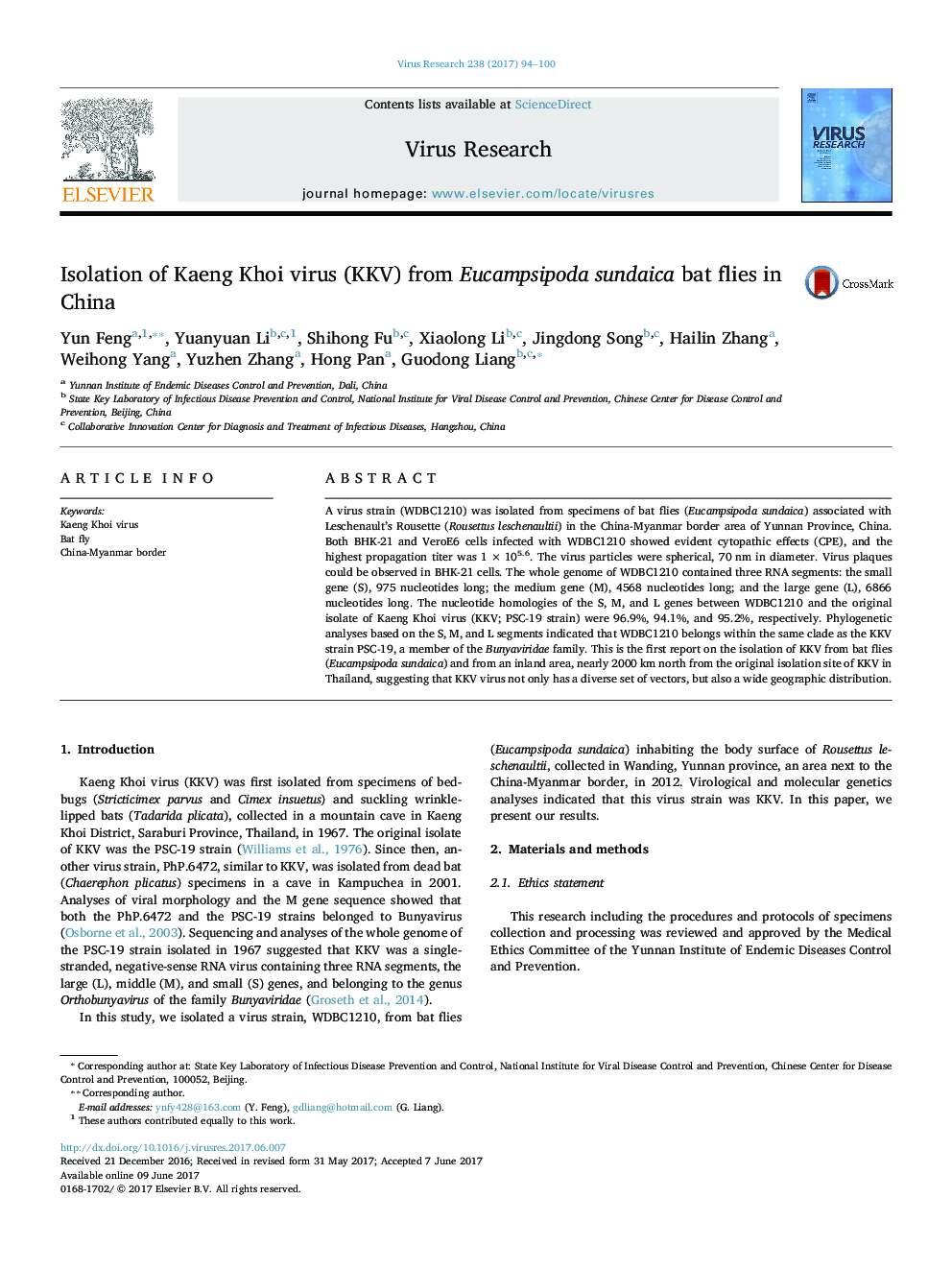| Article ID | Journal | Published Year | Pages | File Type |
|---|---|---|---|---|
| 5675358 | Virus Research | 2017 | 7 Pages |
â¢First isolation of KKV from bat flies inhabiting on bats collected in Yunnan, China.â¢First report on KKV isolated from an inland area far away from the original site.â¢KKV has a diverse set of vectors and a wide geographic distribution as well.
A virus strain (WDBC1210) was isolated from specimens of bat flies (Eucampsipoda sundaica) associated with Leschenault's Rousette (Rousettus leschenaultii) in the China-Myanmar border area of Yunnan Province, China. Both BHK-21 and VeroE6 cells infected with WDBC1210 showed evident cytopathic effects (CPE), and the highest propagation titer was 1Â ÃÂ 105.6. The virus particles were spherical, 70Â nm in diameter. Virus plaques could be observed in BHK-21 cells. The whole genome of WDBC1210 contained three RNA segments: the small gene (S), 975 nucleotides long; the medium gene (M), 4568 nucleotides long; and the large gene (L), 6866 nucleotides long. The nucleotide homologies of the S, M, and L genes between WDBC1210 and the original isolate of Kaeng Khoi virus (KKV; PSC-19 strain) were 96.9%, 94.1%, and 95.2%, respectively. Phylogenetic analyses based on the S, M, and L segments indicated that WDBC1210 belongs within the same clade as the KKV strain PSC-19, a member of the Bunyaviridae family. This is the first report on the isolation of KKV from bat flies (Eucampsipoda sundaica) and from an inland area, nearly 2000Â km north from the original isolation site of KKV in Thailand, suggesting that KKV virus not only has a diverse set of vectors, but also a wide geographic distribution.
